The Scientists and their ideas that led us to our present understanding of Space Weather
“My message is that science is a human activity, and the best way to understand it is to understand the individual human beings who practice it.”
Freeman Dyson, “The Scientist as Rebel,” in Nature’s Imagination – The Frontiers of Scientific Vision, edited by John Cornwell (Oxford University Press, New York, 1995)
(Version 06/20/2022) (This is a work in progress.)
Bibliography (References and sources for pictures, popular science articles and books, and historical time-lines)
Layout description: the date link will take you to Wikipedia’s timeline for that year. Clicking the photo# will expand the thumbnail. The scientist’s name link will take you to a biography. Journal Article Reference links will take you to an electronic copy of the paper (note that several journals require subscription to access the online paper). (# a broken photo link – or a photo other than a portrait – signifies that I am looking for a photo. If you have or know of one please contact me – [email protected]).
| 350 BC | 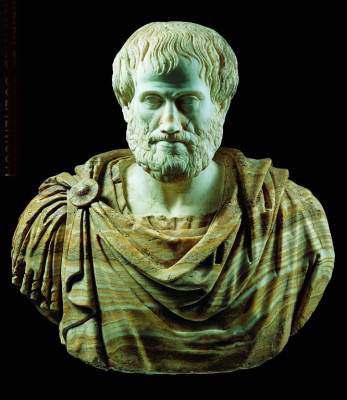 | Aristotle | Father of Western scientific thought including the place of the sun and Earth and the idea of an unblemished sun. Ideas would dominate scientific thought for the next 1800 years (though his writings were essentially lost to the west for most of that time). (Aristotle [ca 345 BC] Meteorologica. Translated by H.D.P. Lee, London: William Heinemann, 1963) |
| 1088 |  | Shen Kua | Chinese encylopaedist gave first clear account of suspended magnetic compasses. Name of book that description of compass is given -Meng ch’i pi t’an (Dream Pool Essays). |
| 1187 |  | Alexander Neckam of St. Albans | First European to describe a magnetic compass, nearly 100 years after the Chinese. (Neckham, A., De Naturis Rerum (On the Natures of Things), 1180, In De naturis rerum libri duo, with the Poem of the Same Author, De laudibus divinæ sapientiæ. Ed. Thomas Wright. Rerum Britannicarum Medii Ævi Scriptores (“Rolls Series”) 34. London: HMSO, 1863.) Neckham in all probability heard of the Chinese compass through the silk road trade routes from China to Western Europe. In the same book he describes silkworms. Other tretise that describes compass was De Utensilibus. |
| 1576 |  | Robert Norman | English instrument maker discovers that the Earth’s magnetic field not only points horizontally, but has a vertical component (called dip). (Title of work: The newe Attractiue containyng a short discourse of the Magnes or Lodestone, and amongest other his vertues, of a newe discoured secret and subtill properties, concernyng the Declinyng of the Needle, touched there with onder the Plaine of the Horizon. Now first found out by ROBERT NORMAN Hydrographer. Here onto are annexed certaine necessarie rules for the art of Nauigation, by the same R. N. Imprinted at London by John Kyngston, for Richard Ballard, 1581) |
| 1577 |  | Tycho Brahe | Observes a comet and using parallax method shows that it is outside the atmosphere (in conflict with Aristotle’s immutability of the heavens). (Brahe, Tycho, De Mundi Aetherei Recentioribus Phaenomenis (“Concerning the New Phenomena in the Ethereal World) (Uraniburg, 1588) |
| 1600 |  | William Gilbert | Publishes “De Magnete” in which the Earth’s magnetic field is described. (Gilbert, W., De Magnete, translated P. Fleury Mottelay, reprinted 1958, New York, Dover Press, 1893). |
| 1610 |     | Johannes Fabricius (aka Goldsmid) Thomas Harriot Galileo Galilei Christoph Scheiner | More or less simultaneously make first observations of sunspots with a telescope. (Galilei, Galileo, History and Demonstrations Concerning Sunspots and Their Phenomena, 1613; Istoria e dimostrazioni intorno alle macchie solari e loro accidenti comprese in tre lettere, Galilei, G, M. Welser, C. Scheiner, A. de Filis, Roma, Appresso Giacomo Mascardi, 1613 – the later book contains the letters of Galileo and Scheiner to Augsburg magistrate Mark Wesler) |
| 1635 |  | Henry Gellibrand | Discovered the secular (change over years) variation of magnetic declination. (Gellibrand, H., Epitome of Navigation, London, Printed by Andr. Clark for William Fisher, 1674 – published many decades after his death). |
| 1669 |  | Sir Issac Newton | Discovers the composition of light. Leads way for spectroscopy. (Newton I., and J. T. Desaguliers, An account of some experiments of light and colours, formerly made by Sir Isaac Newton, and mention’d in his Optiks, Lately repeated before the Royal Society by J. T. Desaguliers, F. R. S, Philosophical Transactions (1683-1775), Vol 29, p. 433-447, 1714-1716) |
| 1716 | 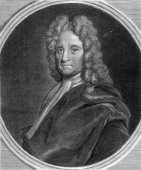 | Edmund Halley | Notes that the orientation of auroral curtains are aligned with projections of the Earth’s magnetic field into the upper atmosphere. (Halley, E., An Account of the late Surprising Appearance of the Lights seen in the Air, on the fixth of March last: with an Attempt to explain the Principal Phaenomena thereof, Philosophical Transactions (1683-1775), Vol. 29. (1714 – 1716), pp. 406-428.) One of the great astronomers of the 17th century with a number of achievements to his credit including measuring stellar paralax for the first time and calculating the orbit of his famous comet. |
| 1722 |  | George Graham | London Instrument maker develops sensitive compass and determines that geomagnetic field undergoes large and rapid variations. (Graham, G., An Account of Observations Made of the Variation of the Horizontal Needle at London, in the Latter Part of the Year 1722, and Beginning of 1723. By Mr. George Graham, Watchmaker, F. R. S., Philosphical Transactions (1683-1775), Vol 33. (1724-1725, p 96-107) (subscription) |
| 1733 |  | Jean Jacques d’Ortous de Mairan | Publishes first textbook devoted to aurora. He proposes that aurora are the mingling of solar and earth atmospheres/zodiacal lights. Suggest sunspot correlation and existence of southern aurora. (de Marian, Traite Physique et Historique de l’Aurore Boreale, 1733) |
| 1747 |  | Anders Celsius Olaf Hiorter | Celsius and his student (and Brother-in-law) Olaf Peter Hiorter note aurora are accompanied by magnetic deflections. (Hiorter, OP, Om Magnet-nalens Atskillige andreingar. Kongle Swen Wetenskaps Acad Handlingar, pp 27-43, 1747). In collaboration with Graham in London determine that disturbances were not local phenomena. (Unit of temperature is named after Celsius). |
| 1782 | Jean-Dominique Cassini | Showed that the daily variation of declination is independent of the daily variation of air-temperature. This shows that geomagnetic variations are not atmospheric. (Jean-Dominique Cassini, De l’influence de l’équinoxe du printemps et du solstice d’été, sur la déclinaison et les variations de l’aiguille aimantée, 1791). He is the great-grandson of Giovanni Domenico Cassini, the famous astronomer known for his observations of Saturn. | |
| 1785 | Charles Coulomb | Demonstrates the electric force between charged objects. (Coulomb, CA, Mémoires sur l’électricité et la magnétisme, Dibner, Bern, 1789). (SI unit of electrical charge is named after him). | |
| 1790 |  | Henry Cavendish | Accurately measures the height of the aurora using triangulation (80 -112 km). (Cavendish, Henry, On the Height of the Luminous Arch Which Was Seen on Feb. 23, 1784. By Henry Cavendish, Esq. F.R.S. and A. S., Philosophical Transactions of the Royal Society of London, V. 80, pp 101-105, 1790) (subscription) |
| 1820 |  | Hans Christian Oersted | Discovers relationship between electricity and magnetism by noting that an electric current produces an magnetic field.(Oersted, H. C., Experiments on the effect of a current of electricty on the magnetic needle, printed by C. Baldwin, London, 1820). |
| 1820 |  | Andre Marie Ampere | Within weeks of hearing of Oersted’s observations develops electromagnetic theory relating current and magnetic field. Relationship is now part of Maxwell’s Equations and is called Ampere’s Law. (SI unit of current is named after him). (Ampere, A. M., Recueil d’observations électro-dynamiques, Paris: Crochard, 1822) |
| 1821 | 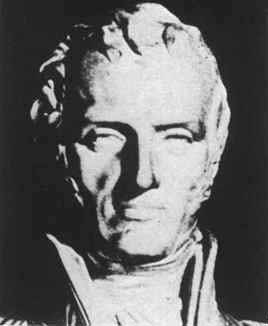  | Claude Navier George Stokes | Navier (in 1821) and Stokes (some 20 years later) independently developed the differential equations describing incompressible fluid flow. The equation is now known as the Navier-Stokes equation and is the basis of fluid dynamics. Navier was a student of Fourier. Naviar, M., Mémoire sur les lois du mouvement des fluides, 1827; Sir George Gabriel Stokes. On the steady motion of incompressible fluids. Cambridge Philosophocal Society Transactions, 7:439-454,465, 1842. |
| 1822 | 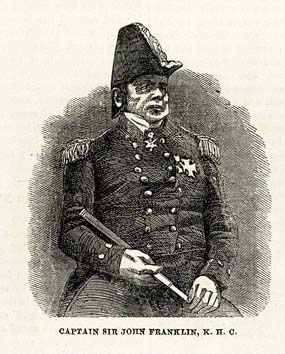 | Captain John Franklin | Polar explorer who noted that the occurrence of aurora does not increase all the way to the pole. Made these observations from 1819-1822. His party perished in 1845 in their ill-fated attempt to discover the Northwest Passage. Observations consistent with an auroral oval. (Franklin, Sir John, Narrative of a journay to the shores of the polar sea, in the years 1819,20, 21, and 22, By John Franklin, Captain, R.N., F.R.S., and commander of the expedition, Published by authority of the Right Honourable the Earl Bathurst, London: John Murray, Albemarle-street, 1823) |
| 1827 |  | George Simon Ohm | Developed relationship between current flow and the electrical potential or voltage drop across object. Now known as Ohm’s Law. (SI unit of electric resistance is named after him). (Ohm, G. S., Die galvanische Kette, mathematisch bearbeitet – The Galvanic Circuit Investigated Mathematically, Berlin, 1827) |
| 1831 |  | Michael Faraday | Demonstrates electromagnetic induction, namely that a magnetic field can induce an electric current. Relationship is now part of Maxwell’s Equations and is called Faraday’s Law of Induction. (Faraday, Michael, Experimental Researches in Electricity, Philosophical Transactions of the Royal Society of London, V 122, p125-162, 1832) (subscription) In 1845 demonstrates the rotation of polarized light by a magnetic field (now called Faraday rotation). (Faraday, Michael, Experimental Researches in Electricity. Nineteenth Series, Philosophical Transactions of the Royal Society of London, V. 136, p 1-20, 1846) (subscription) In 1834 was the first to coin the word ion (1834 Michael Faraday in Philosophical Transactions of the Royal Society. CXXIV. p79 “Finally, I require a term to express those bodies which can pass to the electrodes … I propose to distinguish these bodies by calling those anions which go to the anode of the decomposing body; and those passing to the cathode, cations; and when I have occasion to speak of these together, I shall call them ions.”) (subscription) SI unit of electrical capacitance (Farad) is named after him. |
| 1832 |  | Johann Carl Friedrich Gauss | Developed mathematical description of geomagnetic field. Worked with Weber at Gottingen University. (cgs (or often called Gaussian) unit of magnetic field strength is named after him). (Gauss, C. F., Allgemeine Theorie des Erd-magnetismus, in “Resultate aus den Beobachtungen des magnetischen Vereins im Jahre 1838,” publ C. F. Gauss and W. Weber Leipzig – English translation by Mrs. Sabine, revised by Sir John Herschel, “Scientific Memoirs,” (R. Taylor ed.), 2, 184-251, London, 1841) |
| 1832 |  | Wilhelm Eduard Weber | Professor of Physics at Gottingen and developed sensitive magnetometers while working with Gauss. (Weber, W. E., On a transportable magnetometer, R. and J. E. Taylor, London, 1840-1849?). (SI unit of magnetic flux is named after him). |
| 1836 | Baron von Humboldt | Proposes the first worldwide array of magnetometers to study geomagnetism. (Humboldt’s letter to the Royal Society is reprinted in Nature, 141, 299, 1938) | |
| 1843 |  | S. H. Schwabe | Determined that sunspots wax and wane on a 10-11 year period, now called the solar cycle. Solar Observations During 1843 by Heinrich Schwabe, (Astronomische Nachrichten, vol. 21., p.233, 1844) |
| 1846 |  | Christian Doppler | Develops theory of change in frequency for sound and light depending on relative motion of observer and object. Now called the Doppler shift. Fundamental for spectroscopy and radar. (Doppler, C., Beitrage zur Fixsternenkunde, Prag, Druck von G. Haase sohne, 1846) |
| 1847 |  | Charles Brooke | Invented the first magnetic self-recording arrangement using photographic methods. Photography was invented in 1816. Device was first used at the Greenwich Royal Observatory under Astronomer Royal Airy. (Brooke, C., On the automatic registration of magnetometers, and other meteorological instruments, by photography, Phil. Trans. London, pp. 59-77, 1847.) (subscription) |
| 1851 | J. Lamont | Determined geomagnetic variations had a 10-year periodicity (similar cycle as sunspots, but he did not make the connection). Sabine did the following year. (Lamont, J., Beobachtungen des Meteorogischen Observatoriums auf dem Hohenpeissenberg von 1792-1850, Annalen der Koeniglichen Sternwarte bei Muenchen Supplementband, vol 1, pp. 1-788, 1851 – note this is 788 pages long full of tables of temperature, pressure, and declination) | |
| 1852 | Col. Sabine | Showed geomagnetic variations were a world-wide phenomena using British observatories set up at the suggestion of Humboldt. (Sabine, E., On periodical laws discoverable in the mean effects of the larger magnetic disturbances, Philos. Trans. R. Soc. London, 142, 103, 1852.) (subscription) | |
| 1852 | Rudolf Wolf | Independently puts forward solar cycle – geomagnetic activity link shortly after Sabine. (Wolf, M. R., Extract of a Letter Addressed to General Sabine, R.A., Treas. and V.P.R.S., by M. R. Wolf, Dated Zurich, March 7, 1857, Proceedings of the Royal Society of London, V 8 (1856-1857), pp 416-417) (subscription) | |
| 1859 |  | Richard Carrington | Observes white light flare and a day latter a geomagnetic storm. Suggests causal link. (Carrington, R. C. Description of a singular appearance in the Sun on September 1, 1859, Mon. Not. Ry. Astron. Soc, 20, 13, 1860). |
| 1859 |  | Elias Loomis | American professor mapped occurrence and location of aurora suggesting auroral oval. (published map) (Loomis, E., Aurora Borealis or Polar Light, Harper’s New Monthly Magazine, V39, Issue 229, June 1869) |
| 1868 | George Biddell Airy | Proposed (incorrectly) that the sudden variations in the Earth’s magnetic field were due to transient Earth Currents opposed to currents in the upper atmosphere. (Airy, George Biddell, Comparison of Magnetic Disturbances Recorded by the Self-Registering Magnetometers at the Royal Observatory, Greenwich, with Magnetic Distubances Deduced from the Corresponding Terrestrial Galvanic Currents Recorded by the Self-Registering Galvanometers of the Royal Observatory, Philosophical Transactions of the Royal Society of London, Vol. 158, pp 465-472, 1868) (subscription) | |
| 1868 | Anders Angstrom | Discovers auroral green line in spectra, later to be identified as from nitrogen. (Angstrom, A. J., Recherches sur le Spectre Solaire, W. Schultz, Upsala, 41-42, 1868) This book also contains his atlas of the solar spectrum. The unit of length often used in spectroscopy is named in his honor. | |
| 1868 |  | Jules Janssen | Pioneer in solar spectroscopy and solar photography. Discoverer of helium via spectroscopy in solar atmosphere. Noted that solar prominences can be observed with spectroscopes outside of solar eclipses. (Janssen, M., On the Solar Protuberances, Proceedings of the Royal Society of London, V 17, pp276-277, 1868– article in French) (subscription) |
| 1869 | 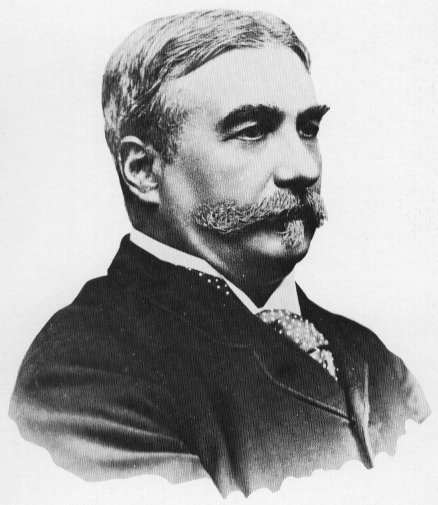 | J. Norman Lockyer | Independently developed solar spectroscopy of solar prominences. (Lockyer, J. Norman, Note on Mr. Huggins’ paper “On a Possible Method of Viewing the Red Flames without an Eclipse”, Monthly Notices of the Royal Astronomical Society, Vol 29, p 90, 1869) Collaborated with Janssen in the discovery of helium. Coined the term chromosphere and founded the Journal Nature. |
| 1870 |  | William J. M. Rankine Pierre H. Hugoniot | Independently solved the Navier-Stokes equation in 1-D whose solutions govern the jump conditions across a shock. Now known as the Rankine-Hugoniot Conditions. Rankine was a professor at Glasgow with Kelvin. (W. J. M. Rankine, On the Thermodynamic Theory of Waves of Finite Longitudinal Disturbance, Trans. Roy. Soc. (London) 160, 277 (1870) (subscription); H. Hugoniot, J. Ec. Polytech. (Paris) 58, 1 (1889)). |
| 1870 | Charles Young | First photograph of solar prominence. Noted that a solar spectrographic “flare ” was associated immediately with small geomagnetic deflections in contrast to Carrington’s delayed event. We now know that Flares can produce both “prompt” and “delayed” responses in the geomagnetic field. (Young Charles Augustus, The sun and the phenomena of its atmosphere, New Haven, Conn., C.C. Chatfield & co., 1872) | |
| 1870 |  | Angelo Secchi | Demonstrated spectroscopically that prominences were features of the Sun and that active or eruptive prominences could obtain velocities greater than the escape velocity of the Sun. (Secchi, Angelo, Le Soleil, Paris: Gauthier-Villars, XVI, 422p, 1870) |
| 1871 | Karl Hornstein | Demonstrates that terrestrial magnetism exhibit a 26 1/3 day periodic change, which he suggests is due to the rotation of the Sun (Hornstein, K., Proceedings of the Imperial Academy of Sciences of Vienna, vol. lxiv – referred to by George Airy, On a Supposed Periodicity in the Elements of Terrestrial Magnetism, with a Period of 26 1/3 Days, Proceedings of the Royal Society of London, V 20 (1871-1872, pp 308-312) | |
| 1873 |  | James Clerk Maxwell | Publishes four differential equations now known as Maxwell’s Equations which formalizes electricity and magnetism. (Maxwell, J. C., A tretise on electricity and magnetism, Oxford : Clarendon Press, 1873) |
| 1878 |  | Balfour Stewart | Proposed, in contrast to Airy, that sudden changes in the geomagnetic field are due to currents in the upper atmosphere. (Stewart, B., Hypothetical views regarding the connection between the state of the Sun and terrestrial magnetism. Encyclopedia Britannica (9th ed.) 16, 181 – 184, 1882 (The date appearing on the title page (1878) cannot apply to this article, which contains some material written later). |
| 1878 | H. Becquerel | Suggested that particles from the sun were responsible for the aurora. Awarded Nobel prize in physics in 1903 for his discovery of spontaneous radioactivity. The SI unit of the activity of a radioactive source is named in his honor). (Not sure if this is the original source for his idea. Becquerel, H., Mémoire sur la polarisation atmosphérique et l’influences du magnétisme terrestre sur l’atmosphère, Bern: Dibner, 1880). | |
| 1879 |  | William Crookes | Develops the “Crookes tube” (Crookes, W., The Bakerian Lecture: On the Illumination of Lines of Molecular Pressure, and the Trajectory of Molecules, Philosophical Transactions of the Royal Society of London, Vol 170, pp. 135-164, 1879) which allows the study of cathode rays (or now called plasmas). (Crookes, W., On a Fourth State of Matter, Proceedings of the Royal Society of London, Vol. 30, pp. 469-472, (1879-1880)). (subscription) |
| 1880 | Edwin Hall | For his PhD, he discovers that a magnetic field exerts a force on a current now known as the Hall Effect. (Hall, Edwin Herbert, On the New Action of Magnetism on a Permanent Electric Current, PhD Thesis, The Johns Hopkins University, 1880. The thesis is published with the same title and some additions in Phil Mag. S 5 Vol 10, no 63, pg. 301, Nov. 1880.) | |
| 1881 |  | Eugen Goldstein | Proposes that aurora caused by cathode rays from the Sun. (Goldstein, E., Eine neue Form elektrischer Abstossung – A new kind of electrical repulsion, Berlin: J. Springer, 1880) Goldstein was a proponent of the wave nature of “cathode rays” and thought of them as electric rays in the ether (Dr. Eugen Goldstein, On the Electric Discharge in rarefied gases, Phil Mag. S 5 Vol 10, no 61, pg. 173, 1880). |
| 1882 |   | Karl Weyprecht George von Neumayer | Proposes (Weyprecht) and organizes (Neumayer) the First International Polar Year (IPY). The first coordinated effort to understand the meteorology, geomagnetism, and the aurora of the polar regions. (Weyprecht, K, Praktische Anleitung zur Beobachtung der Polarlichter und der magnetische Erscheinungen in hohen Breiten, Wein: M. Perles, 1881) |
| 1883 | Osborne Reynolds | Develops test for differentiating between laminar and turbulent flows. Dimensional-less number is now called the Reynolds number. (Reynolds, O., An experimental investigation of the circumstances which determine whether the motion of water shall be direct or sinuous, and of the law of resistance in parallel channels’. Royal Society, Phil. Trans., 1883.) (Subcription) | |
| 1884 | John Poynting | Shows that Maxwell’s equations predict that E&M waves carry energy (Poynting, J. H., On the Transfer of Energy in the Electromagnetic Field, Philosophical Transactions of the Royal Society of London Vol. 175 (1884), pp. 343-361) (subscription) Indenpendently discovered by Heaviside in 1891 (Heaviside, On the forces, stresses, and fluxes of energy in the electromagnetic field, Philosophical Transactions of the Royal Society of London. A Vol. 183 (1892), pp. 423-480) (subscription) | |
| 1887 |  | Heinrich Hertz | Following Maxwell’s predictions, first to send and recieve radio waves. He did not foresee much practical use for his results. (Hertz, Heinrich, Ueber sehr schnelle electrische Schwingungen & Nachtrag zu der Abhandlung uber sehr schnelle electrische Schwingungen. Contained in Annalen der Physik und Chemie, Volume 31 pages 421-448, 543-544, 1887; His later book – Untersuchungen Ueber Die Ausbreitung Der Elektrischen-Investigations on the Propagation of Electrical Energy summarizes his many papers on this topic.) |
| 1892 |  | Lord Kelvin | “It seems as if we may also be forced to conclude that the supposed connexion between magnetic storms and sun-spots is unreal, and that the seeming agreement between periods has been mere coincidence.” Presidential Address to Royal Society expanding on work he did in 1863 in which he calculated that the solar magnetic field is not strong enough to influence the Earth’s geomagnetic field. (Kelvin, W. T., Address to the Royal Soc. Nov. 30, 1892, Proc. Roy. Soc. London, A, 52, 302-310, 1892). (Subscription) |
| 1892 |  | George Francis FitzGerald | Proposed corpuscular hypothesis for source of magnetic storms suggesting that “a sunspot is a source from which some emanation like a comet’s tail is projected from the Sun…Is it possible then that matter starting from the Sun with the explosive velocities we know possible there, and subject to an acceleration of several times solar gravitation, could reach the Earth in a couple of days?” [Fitzgerald, G. F., Sunspots and magnetic storms, The Electrician, 30, 48, 1892]. |
| 1896 | 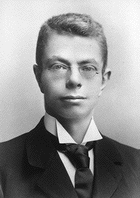 | Peter Zeeman | Discovers spectral line splitting due to presence of magnetic fields. Won Nobel Prize in Physics in 1902. (P. Zeeman, The Effect of Magnetisation on the Nature of Light Emitted by a Substance, Nature, vol. 55, 11 February 1897, pg. 347 (translated from the Proceedings of the Physical Society of Berlin). |
| 1896 | Louis A. Bauer | Founder of the journal Terrestrial Magnetism, which became Terrestrial Magnetism and Atmospheric Electricity in 1899, and the Journal of Geophysical Research in 1949. He was president of the American Geophysical Union (and active in its founding) and the First Chief, Division of Terrestrial Magnetism, U.S. Coast and Geodetic Survey, 1899. First Director, Carnegie Department of Terrestrial Magnetism and Electricity, 1904. | |
| 1897 |  | J. J. Thomson | Discovered the electron and was awarded Nobel Prize in Physics for his discovery in 1906. (Thomson, J. J., Cathode Rays, Philosophical Magazine, 44, 293, 1897) |
| 1900 |  | Kristian Birkeland | Experimenting with a beam of electrons hitting a magnetized sphere leads him to propose that the aurora is caused by beams of electrons from the Sun. Birkeland, Kr., Archives des Sciences Physiques et naturelles, Vol. 1, p. 497, 1896). After making expeditions to the auroral zone in 1899 through 1903 suggests that the same particles that produced aurora also caused geomagnetic variations that he discovered and named polar elementary storms – what we now call substorms [Birkeland, Kr., The Norwegian Aurora Polaris Expedition, 1902-1903, Vol. 1, H. Aschehpug and Co., Christiania. First Section, 1908; Second section, 1913.] |
| 1900 | Sir Oliver Lodge | Following Fitzgerald’s hypothesis suggested magnetic storms were caused by “a torrent or flying cloud of charged atoms or ions” and auroras were due to “the cathode ray[s]…as they graze past the polar regions.” He also anticipates Biermann’s results by 50 years by calculating that comet tails could not be accounted for by electromagnetic radiation but could be explained by particle radiation emanating from sunspots.” (Lodge, O., Sun spots, magnetic storms, comets tails, atmospheric electricity, and aurorae, Electrician, 46, 249-250, 1900). He is also credited with being the first scientist to suggest the ionosphere is created by photoionization by solar radiation [Lodge, O., Mr. Marconi’s results in day and night wireless telegraphy, Nature, 66, 222, 1902.] | |
| 1901 |  | Guglielmo Marconi | Inventor of radio communication. Demonstrated that radio waves can propagate around the Earth’s curvature. Shared Nobel Prize in Physics in 1909 with Braun. (His trans-Atlantic radio signal was covered by many newspapers including “The Times” 16 December 1901). (Joly, J., Mr. Marconi’s results in day and night wireless telegraphy, Nature, 66, 199, 1902.) |
| 1902 | Oliver Heaviside | Suggested that a conducting layer in the upper atmosphere allowed radio waves to propagate around the Earth’s curvature. The Heaviside layer is now called the ionosphere. (Heaviside, O., Telegraphy I. Theory, Encyclopedia Britannica (10th ed.) 33, 213-218, 1902). He is also the first to put Maxwell’s equations into differential form that are used today (i.e., using the dell operator for curl, div, grad). | |
| 1902 |  | Arthur Edwin Kennelly | Independently suggested the presence of an ionized layer in the atmosphere to explain Marconi’s radio experiments. The ionosphere was sometimes called the Heavyside-Kennelly layer. (Kennelly, A. E., On the elevation of the electrically conducting strata of the Earth’s Atmosphere, Elec. World Eng., 39, 473, 1902) |
| 1903 | 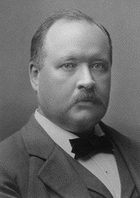 | Svante August Arrhenius | Suggested that radiation pressure could drive charged particles from the Sun (Arrhenius, Svante, On the physical nature of the solar corona, Astrophysical Journal, 20, 224, 1904). Won Noble in Chemistry though published Lehrbuch der kosmischen Physik (Textbook of cosmic physics) in which this corpuscular theory was developed. |
| 1904 |  | E. Walter Maunder | In 1892 noted that large sunspot groups were associated with large geomagnetic storms. In 1904 found 27-day recurrence of geomagnetic activity (the rotation rate of the Sun). Suggested the corpuscular hypothesis proposed by Arrhenius is the causal link. (Maunder, E. W., Greenwich, Royal Observatory, the “great” magnetic storms, 1875 to 1903, and their association with sun-spots, Monthly Notices of the Royal Astronomical Society, 64, 205, 1904) This was a confimation of the results of Hornstein [1871] and Airy [1872], but apparently these earlier works were not widely believed until Maunder’s graphically represented this correlation. |
| 1905 |  | A. Schuster | Proposed (incorrectly) that solar emanations triggered upper atmospheric currents created by the Earth’s rotation opposed to energy directly from Sun. “Even originally well-defined pencils of cathode rays from the Sun cannot reach the Earth. For Birkeland’s theories to be correct, the existence of such cathode rays is clearly presupposed to be necessary…and this assumption is untenable.” (Schuster A., Magnetic disturbances and associated sun-spots, Monthly Notices of the Royal Astronomical Society, 65, 186, 1905) However, he did follow Stewart and Gauss’s work with actual data to infer electrical currents flowing in the Earth’s atmosphere (ionosphere). (Schuster, A., The diurnal variation of terrestrial magnetism, Phil. Trans. Roy. Soc. (London), A180, 467-512, 1889) (subscription) |
| 1907 |  | Carl Stormer | Develops theory of the motion of charged particles in the Earth’s magnetic field (C. Stormer, Sur des trajectories des corpusles electrises dans l’space sons l’action du magnetisme terrestre, Ch 4, Archives des sciences physiques et naturelles, 24, 317-364, 1907) |
| 1908 | George Ellery Hale | Discovered solar magnetism and suggested that sunspots were not sufficient to create storms and suggested that the origin of storms “may be sought with more hope of success in the eruptions shown on spectroheliographic plates in the regions surrounding spots.” Invented the spectroheliograph in 1892. (Hale, George E., On the probable existence of a magnetic field in sun-spots, Astrophysical Journal, 28, 315, 1908) | |
| 1919 |  | V. M. Slipher | Determines that the green line [O I] is permanently present in the night sky even when aurora are not (Slipher, V. M. On the general auroral illumination of the sky and the wavelength of the chief auroral line, Astrophys. J., 49, 266-275, 1919) |
| 1923 | 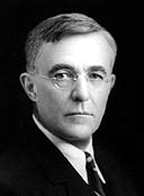 | Irving Langmuir | Coined the term plasma. Won the Noble Prize in chemistry in 1932[Though he coined the term in 1923, one of the first uses of it in the refereed literature was in Langumuir, I, The interaction of electron and positive ion space charges in cathode sheaths, Physical Rev., 33, 954-989, 1929] |
| 1923 |  | Peter Debye | Chemical Physicist who with Erich Huckel derived a theory for electrolytic solutions that defined a fundamental plasma parameter now called Debye Length. This length describes the distance at which the Coulomb force of a charge is shielded. (P. Debye and E. Hückel, Zur Theorie der Elektrolyte. I. Gefrierpunktserniedrigung und verwandte Erscheinungen (On the Theory of Electrolytes. I. Freezing Point Depression and Related Phenomena), Physikalische Zeitschrift, Vol. 24, No. 9, 1923, pp. 185-206. Translation of this paper. The CGS unit of dipole moment is named for him (debye (D)). Won Nobel Prize in Chemistry in 1936. |
| 1924 | 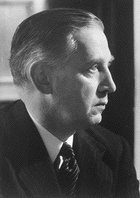 | Sir Edward Victor Appleton | Using radio waves proved the existence of a charged layer in the upper atmosphere now known as the ionosphere. Won Nobel Prize in Physics for his work in 1947. Was a student of J. J. Thomson. (Appleton, E. V., Geophysical influences on the transmission of wireless waves, Proceedings of the Physical Society of London, 37, 1, 16D-22D, 1924). Paper in which he reported the discovery of the F layer (Appleton, E. V., The existence of more than one ionized layer in the upper atmosphere, Nature, 120, 333, 1927) |
| 1924 |  | Joseph Larmor | Develops theory describing relationship between plasma density and frequency where the radio wave just penetrates the ionized layer (so-called critical frequency). (Larmor, J. Why Wireless electric waves can bend around the Earth, Phil. Mag., 48, 1025, 1924). Developed theory for electron motion around a magnetic field. The frequency and radius of this motion is often named after him. |
| 1925 |   | G. Breit M. A. Tuve | Also using radio waves, following Appleton, prove the existence of the ionosphere and accurately measure its height (G. Breit and M. A. Tuve, Nature, 116, 357, 1925; Breit, G, Tuve, M. A., A test of the existence of the conducting layer, Physical Review, 28, 3, 554-575, 1926) |
| 1927 |  | P. O. Pedersen | Develops a theory to explain radio wave propagation in the ionosphere. One type of conductivity is named after him. (Pedersen, P. O. The propagation of radio waves along the surface of the Earth and in .the atmosphere, Dan. Naturvidensk. Samfund P, 15, a/b, 1927). This work derived the vertical structure of the ionosphere due to photoionization several years before it was made famous by Chapman as the Chapman Layer. |
| 1928 | Louis W. Austin | Showed that wireless trans-Atlantic signal strength had a solar cycle modulation. (Austin, L. W., On the influence of solar activity in radio transmission. Proceedings of the Institute of Radio Engineers 16, 166, 1928) | |
| 1930 | Lord Rayleigh (Robert John) | Makes absolute intensity measurements of the auroral green line. (Rayleigh, Absolute intensity of the auroral line in the night sky and the number of atomic transitions, Proc. R. Soc. London A, 129, 458, 1930). (subscription)This is the Nobel prize winning Rayleigh’s son and biographer, Robert John. He succeeded to the title in 1919 and continued in his father’s footsteps being a Fellow of the Royal Society and professor of physics. Though Angstrom observed the aurora spectroscopically, W W. Campbell [A note on the spectrum of the aurora borealis, Astrophys. J., 2, 162, 1895) noted that this line was present in the night sky (this is now called airglow). | |
| 1930 | 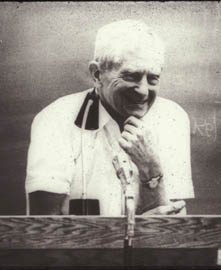 | Sidney Chapman | Proposed with his student (Ferraro) that the Sun emitted a neutral plasma associated with eruptive solar prominences that caused the Earth’s magnetic field to become confined in an attempt to explain sudden storm compressions. (Chapman S. and V. A. Ferraro, A new theory of magnetic storms, Nature, 126:129, 1930.) |
| 1931 | Sidney Chapman | Develops theory of upper atmospheric ionization that explains the structure of the ionosphere. Chapman theory is still the basis of planetary atmospheric ionization. (Chapman, S., The absorption and dissociative or ionizing effect of monochromatic radiation in an atmosphere on a rotating earth, Proceedings of the Physical Society, 43, 1 26-45, 1931; Chapman, S., Some Phenomena of the Upper Atmosphere, Proc. R. Soc. London, A, 132, 353, 1931) | |
| 1932 |  | Johannes Georgi (German Bio) | The Second International Polar Year was held. Georgi proposed in 1927 that a follow on to IPY be conducted to capitalize on the excitement of the new understanding developing on the aurora and geomagnetism. |
| 1936 | Inge Lehmann | A solid Earth Geophysicist who discovered the Earth’s inner core using seismological techniques. Existence of core fundamental to understanding Earth’s geomagnetic field. (” P’ “, Union Geodesique at Geophysique Internationale, Serie A, Travaux Scientifiques 14: 87, 1936) | |
| 1937 | John H. Dellinger | Discovered that sudden radio fadeouts (the name given to radio loss of signal events) had a solar cause (Dellinger, W. F., Sudden ionospheric disturbances, Terrestrial Magnetism Atmospheric Electricity 42, 49-53, 1937.) | |
| 1938 |  | Andrey Nikolaevich Kolmogorov | Developed mathematical/statistical description of fluid turbulence. (Kolmogorov, A., Analytic methods in probability theory, 1938) |
| 1939 |  | Lars Vegard | Proves spectroscopically that aurora is due to emissions of atmospheric gases. Discovers proton aurora (Vegard. L., Hydrogen showers in the auroral region, Nature, 144, 1089, 1939.) |
| 1942 | Hannes Alfven | Developer of magnetohydrodynamic (MHD) plasma theory which describes the behavior of magnetized plasmas. Won Nobel prize in physics in 1970. (Alfven, H., Existence of electromagnetic-hydromagnetic waves, Nature, 150, 405, 1942; concept expanded upon in his monograph Cosmical Electrodynamics, 1948.) | |
| 1943 |  | H. W. Newton | Finds temporal correlation between large solar flares and geomagnetic storms (Newton, H.W., Solar flares and magnetic storms, Mon. Not. R. Astron. Soc., 103, 244, 1943.) |
| 1944 | C. Walén | In studies of the perturbations seen in plasmas, a proportional relation between the changes in the magnetic field and in the plasma velocity was observed. The mathematical relation is now known as the Walén Relation. (Walén C., On the theory of sunspots. Ark. Mat. Astron. Fys. 30A 15 (1944), pp. 1–87. ) | |
| 1945 |  | Marcel Nicolet | To explain the ionization in the D-region of the ionosphere, he proposed that nitric oxide was present in the upper atmosphere and that it was being ionized by solar ultraviolet radiation (121.6 nm). [Nicolet, M., Contribution to the study of the structure of the ionosphere, Mem. Inst. R. Meteorol. Belgique, 19, 1, 1945] |
| 1946 | Leiv Harang | Develops disturbance patterns that connects the midnight and pre-midnight aurora with the inferred ionospheric currents from ground-based magnetic perturbations. The discontinuity in the aurora and ionospheric flows is now called the “Harang discontinuity” (L. Harang, Terr. Mag. Atmos. Electr. 51, 353-380, 1946) | |
| 1946 | Lev Landau | Developed the theory of the collisionless interaction of plasma waves with a plasma (called Landau damping) (Landau, L. D., J. Phys (U.S.S.R.), 10, 25, 1946). Won Nobel Prize in Physics in 1962 for his theory on helium superfluidity. | |
| 1947 |  | Ronald Giovanelli | Suggests that magnetic neutral points near sunspots are site of flare energy release and proposes magnetic reconnection. (Giovanelli, R. G., Magnetic and Electric Phenomena in the Sun’s Atmosphere associated with Sunspots, Monthly Notices of the Royal Astronomical Society, 107, 338, 1947) |
| 1948 |  | Fred Hoyle D. R. Bates | Following the work of Bondi et al. [1947] propose that the E layer of the ionosphere is produced by solar X rays. [Hoyle, F., and D. R. Bates, The production of the E-layer, J. Geophys. Res., 53, 51, 1948; Bondi, H., F., Hoyle and R. A. Lyttleton, On the structure of the solar corona and chromosphere, Mon. Not. R. Astron. Soc. London, 107, 184, 1947] |
| 1949 | Enrico Fermi | Developed theory of the origin of cosmic rays by acceleration between two moving magnetic fields (Fermi, On the origin of Cosmic Radiation, Phys. Rev. 75, 1169-1174, 1949) This work was anticpated by Alfven in the 1930s. Won the Nobel Prize in 1938 for his work in artificial radioactivity due to neutrons. | |
| 1950 |   | Frederick deHoffman E. Teller | Developed technique to analyze shocks by transforming to a moving frame of reference. (deHoffman, F., and E. Teller, Magneto-hydrodynamic shocks, Phys. Rev.,80, 692-703, 1950). (subscription) deHoffman founded General Atomics and Teller developed the Hydrogren Bomb. |
| 1951 | 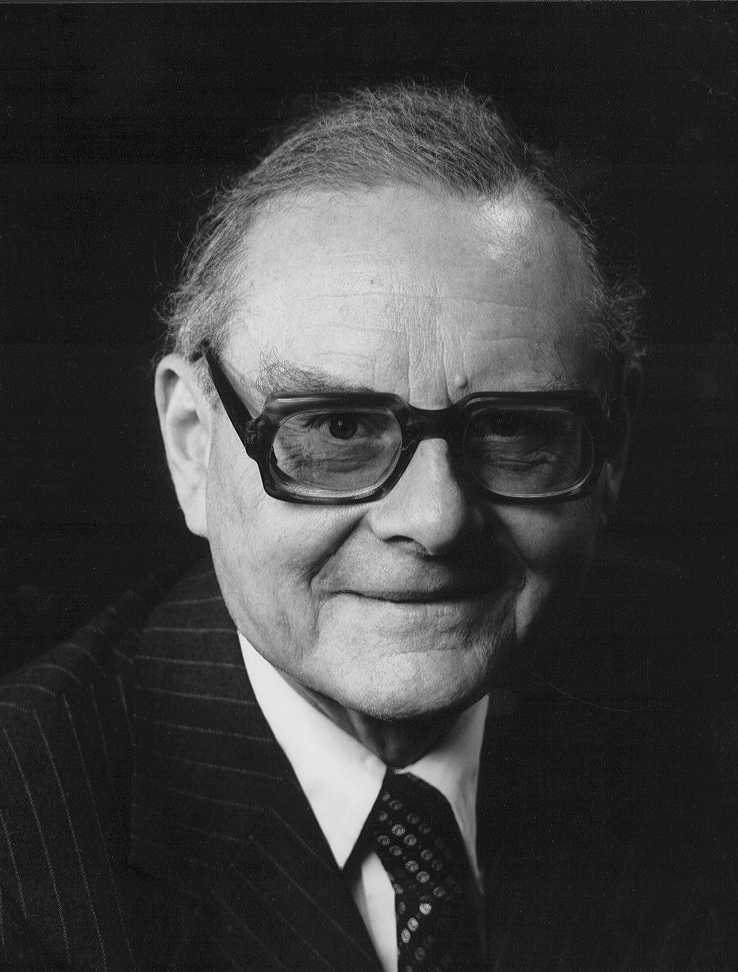 | Ludwig Biermann | Suggested that comet tails always point away from the Sun due to the existence of corpuscular radiation continuously blowing away from the Sun hence successfully predicting the presence of the solar wind. (Biermann, L., Kometscwerfe und solare Korpuskularstrahlung. Z. Astrophys. 29, 274, 1951) |
| 1951 | 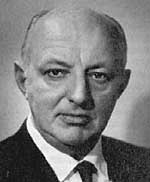 | David Forbes Martyn | Proposed model of geomagnetic storms that explained the observed ionospheric signatures. Since the extension of the ionosphere to large distances was not yet established his model did not include the role of magnetospheric convection and hence relied on the charge separation invoked by Chapman and Ferraro (Martyn, D. F., Nature, 167, 92, 1951) |
| 1953 |  | Owen Storey | Using radio dispersion from lightning discovers existence of plasma in space above the ionosphere. Whistler’s were first observed during WWI and are still used as diagnostics of plasma density. (Storey, L. R. O., An investigation of whistling atmospherics, Phil. Trans R. Soc. London, A, 246, 113-141, 1953). (subscription) |
| 1953 |  | Horace W. Babcock | Inventor (with his father) of the solar magnetograph and made first maps of the solar surface magnetic fields. (Babcock, H. W., The solar magnetograph, Astrophysical Journal, 118, 387, 1953) |
| 1955 |  | John Simpson | Based on his work and that of Forbush (World-wide cosmic ray variations, 1937-1952, J. Geophys. Res., 59, 525, 1954) first to suggest that the negative correlation between cosmic ray intensity and sunspot number is due to the changing configuration of the solar magnetic field over the solar cycle (Simpson, J.A., The cosmic radiation and solar terrestrial relationship, Extr. Ann. Geophys. II, 305, 1955.) |
| 1955 |  | Leverett E. Davis Jr. | Suggests the existence of a “heliosphere” the region of space surrounding the sun formed by the solar wind pushing back the interstellar medium. (Davis, L., Interplanetary magnetic fields and cosmic rays, Phys. Rev, 100, 1440-1444, 1955). (subscription) Though the first use of the word “heliosphere” that I found in print was in Dessler, A. J. Solar Wind and Interplanetary Magnetic Field, Rev. Geophys. 5, pg 1, 1967. |
| 1957 |  | Lloyd Viel Berkner | Suggested in 1952 that coordinated geophysical observations be made during the International Geophysical Year (IGY – 1957-1958) modeled after the International Polar Years. |
| 1957 | T. Neil Davis | With Elvey develops All-sky camera for auroral research during the International Geophysical Year (IGY) (Davis, T.N., The morphology of the auroral displays of 1957-1958, 1, Statistical analyses of Alaska data, J. Geophys. Res., 67, 59-74, 1962; and The morphology of the auroral displays of 1957-1958, 2, Detail analyses of Alaska data and analyses of high-latitude data, J. Geophys. Res., 67, 75-110, 1962) | |
| 1957 |  | S. Fred Singer | Suggests main phase of geomagnetic storm is due to enhanced circulation of trapped energetic particles in the form of a diamagnetic ring current (Singer, S. F., A new model of magnetic storms and aurorae, Transactions of the American Geophysical Union, 38, 175-190, 1957) |
| 1958 |  | J. R. Winckler Jr. | Discovery that visible aurora also emit X-rays. Provides insight into the energization and source of auroral electrons. (Winckler, J. R., L. Peterson, R. Arnoldy, R. Hoffman, X rays from visible aurorae at Minneapolis, Physical Review, 110, 1221-1231, 1958) |
| 1958 |  | Eugene Parker | Developed theory of the solar wind and interplanetary magnetic field. (Parker, E, Extension of the solar corona into interplanetary space, J. Geophys. Res., 64, 1675, 1959.) Was L. Davis Jr.’s first PhD student. |
| 1958 |  | James Van Allen | Discover of the Earth’s radiation belts (named in his honor). Flew a Geiger counter on Explorer 1, the first satellite launched by the United States. (Van Allen, J. A., The geomagnetically-trapped corpuscular radiation, J. Geophys. Res., 64, 1683-1689, 1959.) |
| 1959 |  | Thomas Gold | Coined the word “magnetosphere” (Gold, J. Geophys. Res., v 64, pg 1219, 1959]). Gold is also credited with being the first to suggest interplanetary shocks as a way to explain geomagnetic storm sudden compressions (Discussion on shock waves and rarefied gases, in Gas Dynamics of Cosmic Clouds, North Holland Publishing, Amsterdam, pg 103, 1955) |
| 1959 |  | Valarie A. Troitskaya | Pioneer in understanding ULF wave pulsations as a diagnostic of magnetospheric processes. |
| 1959 | James Heppner | First magnetic survey of Earth’s field from Space on Vanguard III ( Heppner, James P., The world magnetic survey, Space Sci. Rev., 2, 315-354, 1963.) | |
| 1959 | K.I. Gringauz (Adv. Space Res. Obituary) | Using ion traps of the Soviet LUNIK 2 spacecraft identified the plasmapause. (Gringauz, K. I., V. V. Bezrukikh, and V. D. Ozerov, Results of measurements of the concentration of positive ions in the atmosphere, using ion traps mounted on the Third Soviet Earth Satellite. In Artificial Earth Satellites, ed. L. V. Kurnosova, 6:77-121, New York: Plenum Press, 1961) | |
| 1959 | Alex. J. Dessler Eugene. N. Parker | Developed hydromagnetic theory of magnetic storms by explaining magnetic depression observed on Earth as due to a ring current encircling the Earth. The mathematical expression relating the magnetic depression to the total energy of the trap particles is now called the Dessler-Parker-Sckopke relationship. (Dessler, A. J., and E. N. Parker, Hydromagnetic theory of magnetic storms, J. Geophys. Res., 64(12), 2239-2259, 1959; Sckopke, N., A general relation between the energy of trapped particles and the disturbance field near the Earth, J. Geophys. Res., 71, 3125, 1966.) | |
| 1960 |  | Paul Coleman | Makes first in situ observations of the interplanetary magnetic field. (Coleman, P.J., L. Davis, and C. P. Sonett, Steady component of the Interplanetary Magnetic Field: Pioneer V. Physical Review Letters, 5, 43-46, 1960) (subscription) |
| 1961 | Jim Dungey | Develops open model of the magnetosphere which incorporates dayside and nightside reconnection to explain the electromagnetic coupling between the solar wind and the magnetosphere. (Dungey, J. W., Interplanetary magnetic field and the auroral zones, Phys. Rev. Lett., 6, 47, 1961) (subscription) Was a student of Fred Hoyle. | |
| 1961 | W. Ian Axford and Colin O. Hines | Develops theory of magnetospheric convection via viscous interaction of the solar wind with the magnetospheric boundary (Axford, W. I. and C. O. Hines, A unifying theory of high-latitude geophysical phenomena and geomagnetic storms, Canadian Journal of Physics, 39, 1433-1464, 1961.) | |
| 1961 |  | Carl E. McIlwain | Develops coordinate system for magnetospheres. (C. E. McIlwain, Coordinates for mapping the distribution of magnetically trapped particles, J. Geophys. Res., 66, 3681-3691, 1961) |
| 1962 | L. J. Cahill Jr. | Boundary of the Earth’s magnetosphere crossed and magnetopause discovered [Cahill, L.J. Jr., and P.G. Amazeen, The boundary of the geomagnetic field, J. Geophys. Res., 68,1835-1843, 1963] | |
| 1962 |  | Marcia Neugebauer | Principal Investigator of plasma instrument of first US interplanetary satellite (Mariner 2) launched to Venus. (Neugebauer, M., and C. W. Snyder) Mariner 2 observations of the solar wind. 1. Average properties, J. Geophys. Res. 71:4469 1966.) |
| 1962 |  | C. P. Sonett | Principal Investigator of magnetometer on Mariner 2 and observes in situ the first interplanetary shock. (Sonnet, C. P., D. S. Colburn, L. Davis, E. J. Smith, and P. J. Coleman, Evidence for a collision-free magnetohydrodynamic shock in interplanetary space, Phys. Rev. Lett., 13, 153, 1964) (subscription) Also first to observed the Earth’s Bow Shock (Sonnett, C. P. and I. J. Abrahms, The distant geomagnetic field, 3, Disorder and shocks in the magnetopause, J. Geophys. Res., 68, 1233, 1963. Also see next entry in timeline). |
| 1962 |  | P. J. Kellogg W. I. Axford | Predict the existance of a planetary bow shock in front of the Earth. (Axford, W. I., The interaction between the solar wind and the Earth’s magnetosphere, J. Geophys. Res., 67, 3791-3796, 1962; Kellogg, P. J., Flow of plasma around the Earth, J. Geophys. Res., 67, 3805-3811, 1962.) Discovered the following year (Ness et al., Initial results of the IMP-1 magnetic field experiment, J. Geophys. Res., 69, 3531-3569, 1964) |
| 1962 | E. G. Harris | Develops analytic model of a plasma sheet (a region within a magnetosphere) that is still widely used. (Harris, E. G., On a plasma sheet separating regions of oppositely directed magnetic field, Nuvo Cim, 23, 115, 1962.) | |
| 1962 |  | Keith Cole | Proposes that the ionosphere is heated via Joule heating (collisions of charged particles due to a current flowing in a resistive medium) Cole, K.D.: Joule heating of the upper atmosphere, Aust. J. Phys., 15, 223, 1962. He was also the first to show that red arcs and the pre-dawn enhancement in airglow were the result of thermal conduction from above. Cole, K.D. (1965). Stable auroral red arcs, sinks for energy of Dst main phase. Journal of Geophysical Research, 70, 1689-706. |
| 1963 |  | Don L. Carpenter | Using whistler observations notes that the sharp drop in densities (later coined the plasmapause by Carpenter) is a common feature of the plasmasphere. (Carpenter, D. L., Whistler evidence of a ‘knee’ in the magnetospheric ionization density profile, J. Geophys. Res., 68, 1675, 1963.) |
| 1963 |  | Andy Nagy | Makes the first direct measurements of of ion and electron temperatures of the ionosphere, Nagy, A. F.; Brace, L. H.; Carignan, G. R.; Kanal, M., Direct Measurements Bearing on the Extent of Thermal Nonequilibrium in the Ionosphere, Journal of Geophysical Research, Vol. 68, p.6401 |
| 1964 |  | Syun-Ichi Akasofu | Connects auroral morphological changes to geomagnetic disturbances and introduces concept of geomagnetic substorms. (Akasofu, S.-I., The development of the auroral substorm, Planet. Space Sci., 12(4), 273-282, 1964.) (subscription) |
| 1965 |  | Norman Ness | Discovers the Earth’s Magnetotail (Ness, N., The Earth’s Magnetic tail, J. Geophys. Res., 70, 2989, 1965) |
| 1965 | John M. Wilcox Norman Ness | Observationally discovers the sector structure of the interplanetary magnetic field (IMF) (e.g., observed that the IMF generally has a toward the sun or away from the sun polarity separated by a heliospheric current sheet). (Wilcox, J. M., and N. F. Ness, Quasi-stationary corotating structure in the interplanetary medium, J. Geophys. Res., 70, 5793-5805, 1965; Ness, N. F. and J. M. Wilcox, Sector structure of the quiet interplanetary magnetic field, Science, 148, 1592-1594, 1964) | |
| 1966 | 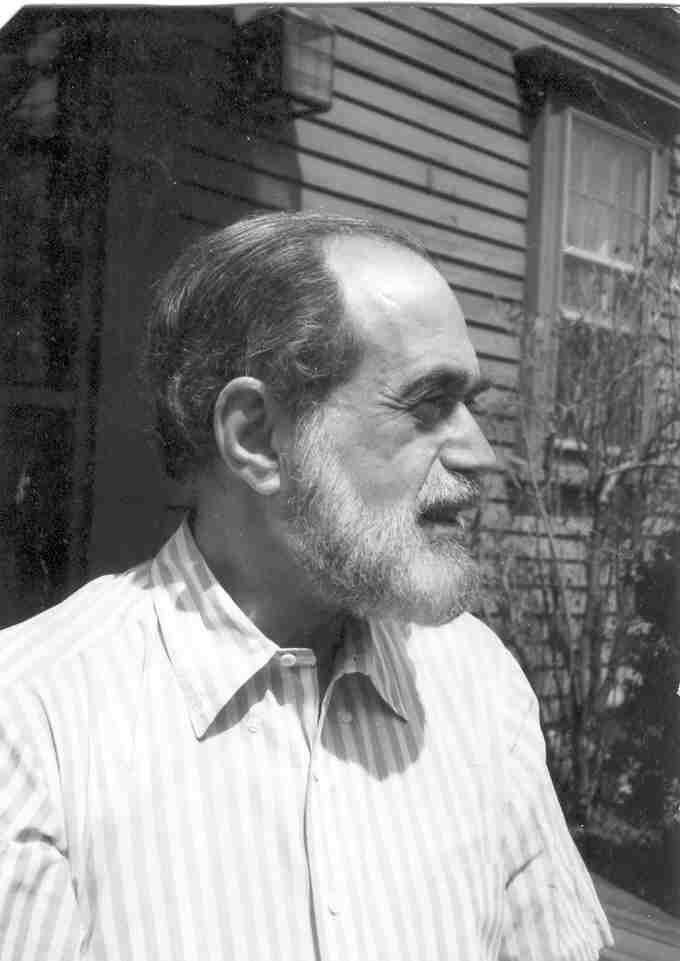 | C. F. Kennel H. E. Petschek | Formulate theory of trapped radiation in the Earth’s magnetosphere (Kennel, C. F., and H. E. Petschek, A limit on stably trapped particle fluxes, J. Geophys. Res., 71, 1-28, 1966). Petschek also contributed significantly to our understanding or magnetic reconnection by recognizing that the size of the reconnection region is definded by the rate of reconnection opposed to the size of the system (Petschek, H. E., The Mechanism for Reconnection of Geomagnetic and Interplanetary Field Lines, The Solar Wind, Proceedings of a conference held 1-4 April, 1964 at the California Institute of Technology. Edited by Robert J. Mackin, Jr. and Marcia Neugebauer. Oxford: Permanon Press, 1966., p.257) |
| 1966 | Sam J. Bame | Using data from the low-energy electron instrument on the VELA series of satellites coins the term “plasma sheet” to describe the permanant plasma region in the Earth’s magnetotail. (Bame, S. J., , J. R. Asbridge, H. E. Felthauser, R. A. Olson, and I. B. Strong, Electrons in the Plasma Sheet of the Earth’s Magnetic Tail, Phys. Rev. Lett. 16, 138–142, 1966) (subscription) | |
| 1966 |  | J. R. Spreiter | Developed hydromagnetic model of solar wind flow around the magnetosphere (Spreiter, J. R., A. L. Summers, and A. Y. Alksne, Hydromagnetic flow around the magnetosphere, Planet. Space Sci., 14, 223-253, 1966) (subscription) |
| 1966 | Don Fairfield | Discovered that the level of geomagnetic activity depended on the polarity of the Interplanetary magnetic field (IMF) north-south field component. For southward IMF activity increased while for northward IMF activity was weak. This strongly supported Dungey’s [1961] open magnetosphere model. (Fairfield, D.H., Polar magnetic disturbances and the interplanetary field, Space Res., VIII, 107-119, 1967; Result also found in Fairfield and Cahill, Transition region magnetic field and polar magnetic disturbances, J. Geophys. Res., 71, 155-169, 1966) | |
| 1969 |  | R.W. Farquhar | Orbital Dynamicists suggests halo orbits around the first Lagrangian libration point in front of the Earth could be used to study the Sun and its impact on Earth. Idea first came to fruition with the launch of ISEE-3 in 1978. (Farquhar, R. W. Future missions for libration point satellites, Astronautics and Aeronautics, 7, pg 52-56, May, 1969) |
| 1971 | Cliff Anger Tony Lui | Developed camera (Anger) and analyzed images (Lui) of the first global space-based auroral imager launched on the Canadian spacecraft ISIS-2 (Lui and Anger, A uniform belt of diffuse auroral emission seen by the Isis-2 scanning photometers, Planet. Space Sci., 21, 799-809, 1973.) | |
| 1971 |  | Lou Frank | With K.L. Ackerson, discovered inverted V electron signature in auroral zone providing evidence for field aligned acceleration mechanisms responsible for aurora (Frank, L. A., and K. L. Ackerson, Observations of charged particle precipitation into the auroral zone, J. Geophys. Res. 82, 3612, 1971.) |
| 1972 | Ed Shelley | Discovered heavy ions (oxygen) in the Earth’s magnetosphere (Shelley, E. G., R. G. Johnson, and R. D. Sharp, Satellite observations of energetic heavy ions during geomagnetic storms, J. Geophys. Res., 77, 6104-6110, 1972.) | |
| 1973 |   | Chris T. Russell Robert McPherron | Developers of the current phenomenological model of substorms that includes the three phases (growth, expansion, recovery) used today to describe substorms. (McPherron, R.L. C. T. Russell, and M. Aubry, Satellite studies of magnetospheric substorms on August 15, 1968. (. Phenomenological model for substorms, J. Geophys. Res., 78(16) 3131-3149, 1973; Russell, C. T., and R. L. McPherron, The magnetotail and substorms, Space Sci. Rev., 11, 111-122, 1973) |
| 1974 |  | Jack Gosling | Developed concept of Coronal Mass Ejections by bringing together in situ and coronograph images of solar mass ejecta and placed them into context of geomagnetic activity. [Gosling et al. J. Geophys. Res, v79, pg. 4581, 1974]. |
| 1974 |  | W. J. Hughes | Develops theory describing the effect of the ionosphere on magnetospheric ULF pulsations. Discovers that the magnetospheric waves are rotated by 90 degrees as they propagate their signal to the ground. (Hughes, W. J., The effect of the atmosphere and ionosphere on long period magnetospheric micropulsations, Planetary and Space Science, vol. 22, Aug. 1974, p. 1157-1172). Was a student of Jim Dungey. |
| 1974 | D. Gurnett | A pioneer in radio wave observations of the Earth’s magnetosphere. Discovered that the Earth is a significant radio source. (Gurnett, D. A., The earth as a radio source – Terrestrial kilometric radiation, Journal of Geophysical Research, vol. 79, Oct. 1, 1974, p. 4227-4238) (Abstract) | |
| 1974 | D. Evans | On the basis of the spectra of precipitating auroral electrons suggests the presence of field aligned potential drops (Evans, D. A., Precipitating electron fluxes formed by a magnetic field aligned potential difference, J. Geophys. Res., 79, 2853-2858, 1974.) | |
| 1974 |  | Len Fisk | Proposed the origin of what are known as Anomolous Cosmic Rays (ACR) is the acceleration of interstellar neutrals by interaction with the heliosphere L. A. Fisk, B. Kozlovski, R. Ramaty, Astrophys. J. 190, L35 (1974). |
| 1976 | T. Iijima T.A. Potemra | Developed first global scale map of field aligned currents (FACs) into the polar region of the Earth’s magnetosphere (Iijima, T., and T. A. Potemra, The amplitude distribution of field-aligned currents at northern high latitudes observed by Triad, J. Geophys. Res., 81, 2165, 1976). (abstract) | |
| 1976 | Ed Hones | Developer of the near-Earth neutral line model of geomagnetic substorms in which plasmoid formation plays a prominent role in magnetotail dyanmics. (Hones, E. W., Jr., The magnetotail:its generation and dissipation. In Physics of Solar Planetary Environments, ed. D. J. Williams (p.558) Washington DC: American Geophysical Union, 1976.) | |
| 1978 | J. N. Leboeuf | First 2-dimensional time-dependent MHD simulation of the global magnetosphere (Leboeuf, J.N., Tajima, T., Kennel, C. F., Dawson, J. M., Global simulation of the time-dependent magnetosphere, Geophys. Res. Lett., 5, 609-612, 1978). (abstract) | |
| 1980 |   | Gary Erickson R. Wolf | Examined the implications of steady magnetospheric convection in the magnetotail, which led to the idea that the substorm is an inherent feature of the magnetosphere. [Erickson, G. M., and R. A. Wolf, Is steady convection possible in the Earth’s magnetotail? Geophys. Res. Lett., 7, 8970900, 1980.] (abstract) |
| 1981 | L. F. Burlaga | Discovers large scale magnetic structures in the solar wind (called Magnetic Clouds) have flux rope field structures. (Burlaga, L. F., E. Sittler, F. Mariani, and R. Schwenn, Magnetic loop behind an interplanetary shock: Voyager, Helios and IMP-8 observations, J. Geophys. Res., 86, 6673, 1981.) (abstract) | |
| 1982 |  | N. A. Tsyganenko | Developer of empirical magnetic field models of the Earth’s magnetosphere using in situ magnetic field data (Tsyganenko, N. A., and A. V. Usmanov, Determination of the magnetospheric current system parameters and development of experimental geomagnetic field models based on data from IMP and HEOS satellites, Planet. Space Sci. 30, 985-998, 1982.) (subscription) |
| 1985 |   | M. G. Kivelson D. J. Southwood | Proposed ideas about field line resonances to explain both ground-based and space based observations of ULF waves. (Kivelson, M. G., and D. J. Southwood, Resonant ULF waves – A new interpretation, Geophys. Res. Lett., 12, 49-52, 1985.) (abstract) This paper followed a series of four papers in JGR that examined the effect of ULF waves on particle observations. |
| 1990 | W. Baumjohann V. Angelopoulos | Discovered that plasma sheet flows generally have a highly variable direction and low speed though often contain earthward and tailward high speed flows that were named Bursty Bulk Flows (BBFs) by Angelopoulos. (W. Baumjohann, G. Paschmann, H. Lühr: Characteristics of high-speed ion flows in the plasma sheet. J. Geophys. Res., 95, 3801-3810, 1990; and V. Angelopoulos, W. Baumjohann, C.F. Kennel, F.V. Coroniti, M.G. Kivelson, R. Pellat, R.J. Walker, H. Lühr, G. Paschmann: Bursty bulk flows in the inner central plasma sheet. J. Geophys. Res., 97, 4027-4039, 1992) (abstracts) | |
| 2001 | 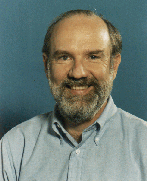 | Jim Burch Bill Sandel | First global images of the Earth’s plasmasphere. (Burch, J.L., et al., Views of Earth’s Magnetosphere with the IMAGE Satellite, Science, 291 (5504), 619-624, 26 Jan. 2001. and Sandel, B. R., et al., Initial Results from the IMAGE Extreme Ultraviolet Imager, Geophys. Res. Lett., 28, No. 8, p. 1439, April 2001.) |
